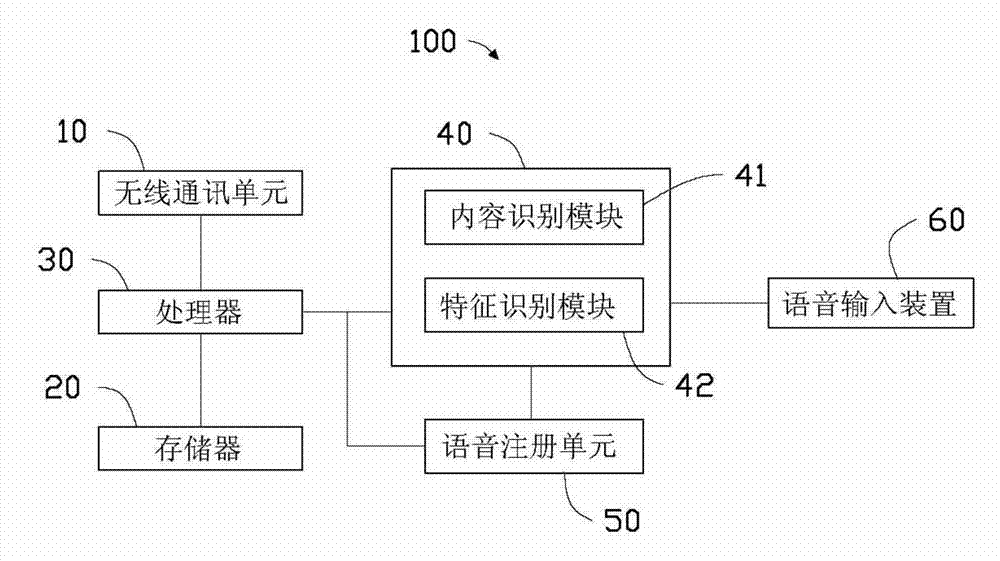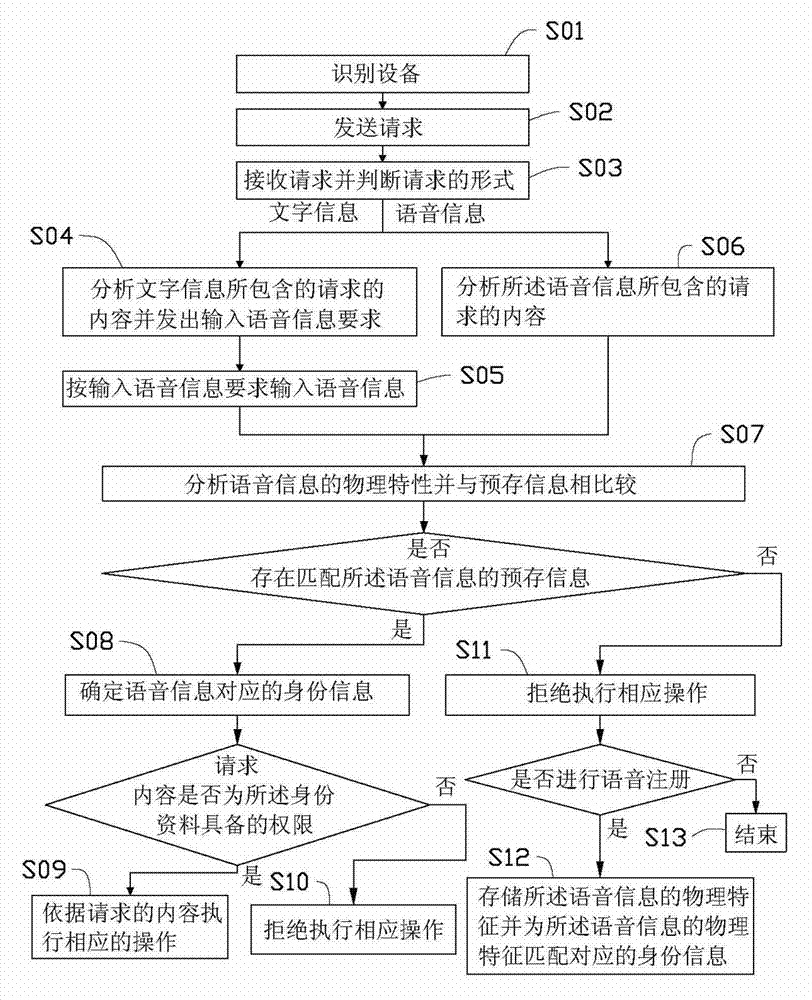Wireless communication terminal equipment and wireless communication method
A wireless communication terminal and wireless communication technology, applied in speech analysis, instruments, electrical components, etc., can solve the problems of inconvenient use of terminal equipment and identity verification of the other party, and achieve the effect of ensuring security and improving convenience.
- Summary
- Abstract
- Description
- Claims
- Application Information
AI Technical Summary
Problems solved by technology
Method used
Image
Examples
Embodiment Construction
[0016] see figure 1 , is a schematic diagram of a wireless communication terminal device 100 according to the present invention. The wireless communication terminal device 100 may be a mobile phone, a tablet computer, a notebook computer, etc. In this embodiment, the wireless communication terminal device 100 is a mobile phone. The wireless communication terminal device 100 includes a wireless communication unit 10 , a memory 20 , a processor 30 , a voice recognition unit 40 , a voice registration unit 50 , and a voice input unit 60 . The wireless communication unit 10, the memory 20, the voice recognition unit 40 and the voice registration unit 50 are electrically connected to the processor 30 respectively, and the voice registration unit 50 is electrically connected to the voice recognition unit 40 at the same time. connected, the voice input unit 60 is electrically connected to the voice recognition unit 40 .
[0017] The wireless communication unit 10 is used to establish...
PUM
 Login to View More
Login to View More Abstract
Description
Claims
Application Information
 Login to View More
Login to View More - Generate Ideas
- Intellectual Property
- Life Sciences
- Materials
- Tech Scout
- Unparalleled Data Quality
- Higher Quality Content
- 60% Fewer Hallucinations
Browse by: Latest US Patents, China's latest patents, Technical Efficacy Thesaurus, Application Domain, Technology Topic, Popular Technical Reports.
© 2025 PatSnap. All rights reserved.Legal|Privacy policy|Modern Slavery Act Transparency Statement|Sitemap|About US| Contact US: help@patsnap.com



